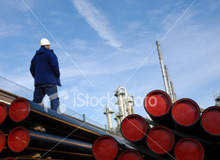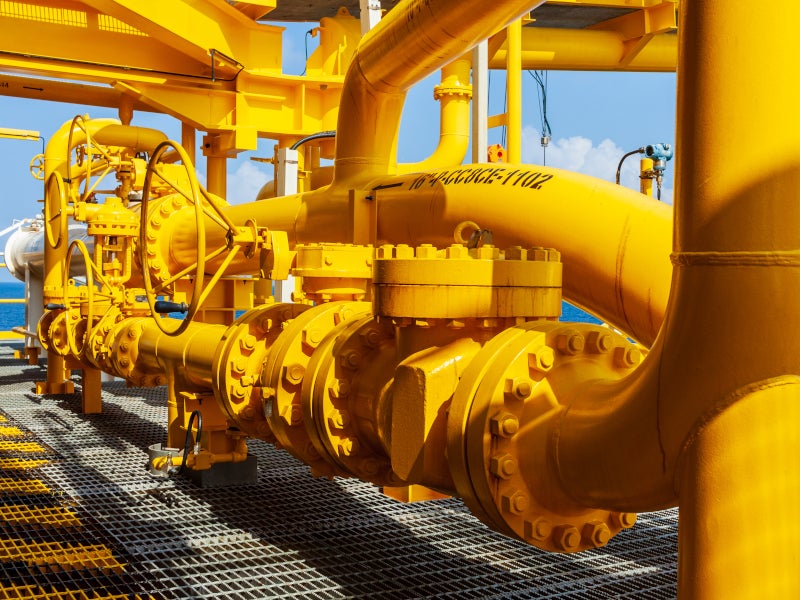
The global economic meltdown has resulted in decreased demand for oil and petroleum products. This, in turn, has affected investments in oil and gas infrastructure, particularly the construction of new transmission pipelines. However, it is a widely held belief that with construction costs and other related costs likely to shoot up in the near future, investing in new pipeline infrastructure will best serve the interests of oil and gas companies once demand and prices of oil and gas reach higher levels.
An emerging trend is the installation of integrated management systems for ensuring efficient maintenance and operation of pipelines. Pipeline operating companies are investing in new technologies, such as ultrasound and satellite monitoring, for the inspection and maintenance of their assets.
Operators are focusing more on lighter and stronger varieties of steel with high-damage resistance, and are designing new pipelines that withstand higher pressure.
Demand-driven investments
Although there has been a fall in global energy demand, it is expected to pick up soon. Developing countries such as India and China have shown high energy demand and are importing huge amounts of crude oil and natural gas for their domestic consumption and industrial usage.
See Also:
The Middle East and China are also boosting their domestic production of petroleum products through the use of new refineries, and expanding existing capacities. Such developments have resulted in the setting up of new pipeline transmission infrastructures, and investments made for expanding existing ones.
How well do you really know your competitors?
Access the most comprehensive Company Profiles on the market, powered by GlobalData. Save hours of research. Gain competitive edge.

Thank you!
Your download email will arrive shortly
Not ready to buy yet? Download a free sample
We are confident about the unique quality of our Company Profiles. However, we want you to make the most beneficial decision for your business, so we offer a free sample that you can download by submitting the below form
By GlobalDataNatural gas effect
Increased usage of natural gas will ensure steady investments in gas pipeline infrastructure. Natural gas accounts for 68% of the world’s pipelines. Despite the level of low investments in new pipeline infrastructure, construction of new gas pipelines will continue because most had started before the global economic slowdown had set in. The three major natural gas-consuming markets are North America, Europe and Asia-Pacific (mainly Far East Asian countries).
In the USA, natural gas will dominate investments and construction work in transmission pipelines
Pipeline transportation of natural gas is less capital intensive and complex compared with LNG projects. While the key parameters that determine pipeline construction costs are diameter, operating pressures and length, for LNG transportation, costs are largely a function of the distance between liquefaction and regasification terminals.
However, while gas pipelines can run across various national borders and can easily connect to existing national transmission grids, for LNG, further investments are required to transport natural gas to the domestic transmission grid. Over moderate distances, costs incurred from natural gas pipelines are lower than those of LNG.
Low costs and the environment
The world pipeline industry is driven by its lower cost per unit of commodity transported and feasibility to transport higher capacities. As its energy consumption is low, its environmental impact is also low.
With oil and gas production moving to remote areas, away from consumption centres, there has been a surge in demand for greater pipeline capacity to bring these supplies to market.
Primary challenges
Pipeline construction costs are expected to rise. Stringent safety norms and environmental regulations have made it difficult to construct new pipelines. New regulatory norms on pipeline safety and security mandate huge investments for the maintenance and inspection of existing systems.
It is estimated that 20% of total investments in pipelines in the next decade will be spent on maintaining and upgrading existing pipelines and compressor stations.
Greater overlapping demand for land use, scrutiny from public agencies and governments, and the growing complexity of approving agencies will only increase the costs for future development of pipelines.
Geopolitical issues play a critical role in the global pipelines industry. Transnational pipelines, which supply oil and natural gas to various countries worldwide, encounter challenges in terms of political instability, transit tariff rates, border issues and route selection. For example, the Iran-Pakistan-India (IPI) Gas Pipeline and the Turkmenistan-Afghanistan-Pakistan-India (TAPI) Gas Pipeline projects are being challenged by volatile political situations.
The IPI pipeline has witnessed tariff disputes on the Pakistan-India section of the pipeline with India disagreeing with the tariff decided by Pakistan, while the security situation in Afghanistan continues to be a major hurdle for the TAPI project.
As countries rich with oil and gas resources, such as Venezuela and Bolivia, have started displaying aggressive resource consolidation, many foreign oil and gas companies have been forced to quit operations there.
Oil and gas assets of some of these private players have also been confiscated by the state. This has reduced foreign investments in the oil and gas industry in South and Central America – a region where most countries have limited capital and technological expertise to exploit and market their reserves. As a result, capital infusion in the pipeline industry in the region has been hit.




